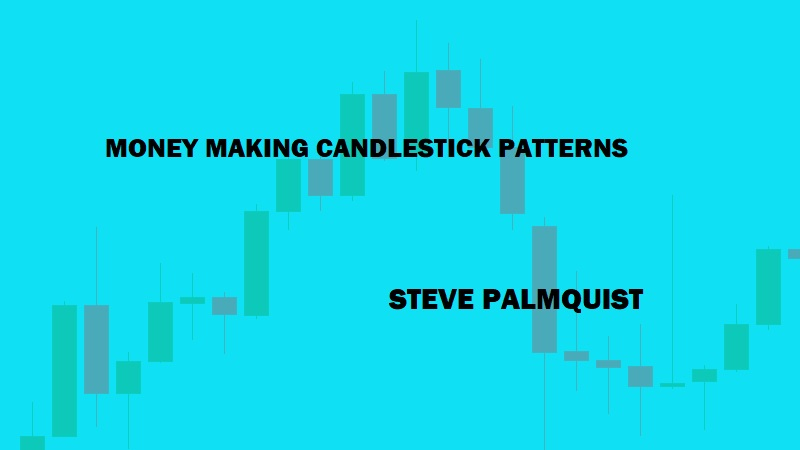Market Adaptive Trading Techniques : Daily Trading Plan
MAP Step four, Market adaptive techniques, Trading in market adaptive techniques summary
Course: [ MONEY MAKING CANDLESTICK PATTERNS : Chapter 8: Market Adaptive Trading Techniques ]

The fourth step in market adaptive trading is writing down your daily trading plan. The process is to look at the current market conditions and determine if they are favorable to trading longs, shorts, or remaining in cash.
MAT STEP FOUR: WRITING YOUR DAILY TRADING PLAN
The
fourth step in market adaptive trading is writing down your daily trading plan.
The process is to look at the current market conditions and determine if they
are favorable to trading longs, shorts, or remaining in cash. If the market is
in a clear trend, then normal position sizes may be used. If the market is in a
trading range, then half size positions may help compensate for the increased
risk that the market typically presents in trading ranges.
Using
smaller position sizes when the market transitions from a trend to a trading
range will also help protect the profits made during the more favorable
trending period. Many trading patterns show a higher percentage of winners
during market trends than they do when the market is in a trading range. If you
reduce your position sizes while the market is in a trading range, you are
adapting to the market by compensating for periods of increased risk caused by
lower winning percentages.
These
techniques are fairly simple, but it takes a lot of practice to get good at
them. Nothing in trading is a magic bullet. It takes time, effort, and money
(e.g., some losses) to learn trading techniques. One of the best ways I have
found to improve results is to write down my market analysis and trading plan
every evening. In this I include an analysis of the key market levels and
volume patterns as well as what would make me take longs, take shorts, or
remain in cash.
The
process of writing out my trading strategy and market analysis grew into
publishing The Timely Trades Letter. Whether or not you decide to use a
newsletter, or work alone, it is important to write out your market analysis
and trading strategy. There is something about writing it down that makes you
really think it through. Trading on emotion or gut feel is usually a bad idea.
Having a well thought out plan helps keep you focused on what is important.
The
best way to illustrate the fourth step in MAT is by a couple of examples. On
the following pages, we show two examples of trading plans to help illustrate
the points made above. Refer to the market charts associated with each example
in order to see what the current market conditions were at the time the trading
plans were written.
EXAMPLE TRADING PLAN: TREND LINE BREAK TO TRADING RANGE
Figure 8.12 shows
the market as of December 10, 2006. The trading plan as published in The Timely
Trades Letter is reprinted on the next page. Note that trend lines are used to
provide trading guidance along with what the market’s volume pattern is
implying about risk levels. This same type of analysis is the part of market
adaptive trading that serves as a guide to the next day’s trading. Also note
that the trading plan outlines when to take longs, when to take shorts, and how
the number of trading positions should be adjusted based on what the market is
doing. Analyzing the market and knowing what will cause me to go long, go
short, or increase/ reduce the number of trading positions helps take the
emotion out of trading and allows me to focus on what the market is actually
doing before I react to it.
FIGURE 8.12: DECEMBER 2006 MARKET CONDITIONS

12.10.06. The market pulled back to retest the
lower boundary of the ascending trading channel again on Thursday and Friday.
Thursday’s distribution day was the third one in the last two weeks, which
indicates more caution on the long side is warranted. Traders can become more
cautious by reducing the number of positions they are trading or by reducing
position sizes.
As
long as the market remains within the current ascending trading channel, as
shown on Figure 8.12, I will focus on
trading longs. The distribution days during the last two weeks are an
indication of some weakness in the market. The distribution days do not mean
the market has to pullback, but they do increase the odds. Since the odds of a
pullback have increased, I need to reduce my exposure a bit. If the market
stops producing distribution days and starts showing accumulation, I will
increase my exposure again.
If
the market continues up without showing significant distribution, I will
continue trading longs by replacing positions that hit their targets with new
triggers. Since we have seen recent distribution, I will be looking for the
stronger volume triggers and pass on ones that are below average volume. If the
market continues showing distribution, I will keep reducing the number of
positions I am willing to trade and look for stronger volume triggers.
New
shorts are not yet attractive. The recent distribution is a warning sign, but
as long as the market is trading within the ascending channel the trend is up
and shorts carry above average risk. If the market clearly breaks below the
lower boundary of the trading channel, I will add a couple of shorts and then
look for a retest of the lower trend line from below and then a continuation
down as a signal to increase the number of short positions beyond just a few. A
break below the 2340 minor horizontal support area would also have me looking
to increase the number of short positions.
If
the market continues moving up within the ascending trading channel, I will
take long triggers as my existing positions hit their targets. If the market
moves to the upper ascending trend line, I will focus more on managing existing
positions rather than adding new ones unless the market shows accumulation. If
the market moves up on declining volume or continues to show distribution, I
will reduce my number of long positions because moving up on declining volume
is a warning sign.
In
addition to the boundaries of the ascending trading channel, shown on Figure 8.12, I am watching the 2470 horizontal
resistance area and the 2390 horizontal support area. A move above the
horizontal resistance area on volume would mean I would slightly increase the
number of positions. A move below the horizontal support level on volume would
mean that I would increase the number of short positions from the first few
initiated on a break below the lower boundary of the ascending trading channel.
EXAMPLE TRADING PLAN: UNUSUAL MARKET MOVES
When the market does something that seems unusual,
backtesting techniques allow traders to find out how often it has happened and
how the market has responded. Again, this approach allows traders to make
fact-based decisions and not emotional ones. Figure
8.13 shows the market conditions on February 28, 2007, the day after the
market showed the largest drop of the past couple of years.
FIGURE 8.13: FEBRUARY 28, 2007 MARKET CONDITIONS

My
trading plan about the February 28 drop is summarized in the excerpt from The
Timely Trades Letter of 02/02/07 below. As you read my market analysis, note
that it describes the same techniques that I’ve outlined throughout this book.
Ignore the talking heads on TV and analyze the price and volume patterns in the
market.
02.02.07.
The market showed a significant drop on huge volume during Tuesday’s session.
Our recent strategy of caution, and not wanting to have a lot of money at risk,
protected us from serious losses. As noted in recent Letters, the relatively
flat period of the last few months and recent indecision implied weakness and
caution. This is why I always want to see any market breakout prove itself by
showing a successful retest, or continuation pattern, before significantly
increasing exposure. Any run worth trading does not require you to be in the
first few days, and getting in too early can hurt you.
Just
a week ago the news was all about the DOW moving to multi-year highs, and how
the markets were looking good. Now the same pundits are talking about a major
correction. The DOW consists of just 30 huge cap stocks and is not representative
of the overall market. It is more like a big cap ETF than a market indicator.
Successful traders watch the market itself, not what the pundits are saying.
The
question is always, “what next,” and the
answer lies in market analysis. The NASDAQ has not seen a drop of over 90
points since 09/17/01 when the market fell 115 points. This type of move is
unusual during recent years. However, the NASDAQ had 13 instances of 90 point
or greater down days in 2001, with 36 of them in 2000.
The
49 days during 2000 and 2001 when the market was down, at least 90 points came
during a very powerful bear market period. This was a great time to be short,
or swing trading, and brutal if you were a buy and holder. The important
question is; “what happened shortly after these
drops,” since that may shed some light on the current situation. I
tested a strategy of buying the day after a 90 point or greater drop and
holding for three days during the 2000 through 2001 period, when the market
showed 49 of these strong one day drops. The interesting thing is that 51% of
the trades were profitable and 49% of the trades were losing positions.
In
the strongest bear market in recent memory (the period of 2000 to 2001), the
odds of making money by buying the market the day after a 90 point or greater
drop, and holding three days, were a coin flip. Even during a strong bear
market, the plunges were followed by a brief bounce about half the time. When I
ran the same test using a five day holding period, only 40% of the trades were
profitable. With an eight day holding, 45% of the trades were profitable. Large
down days lead to short term bounces about half the time.
This
data indicates that a large drop is not strongly predictive in terms of the
short term direction. This implies that we should continue to look at support
and resistance levels, along with the Bollinger Bands, to determine the trading
plan.
I
also looked to see what some of the largest drops were in the period between
the 115 point drop on 09/17/01 and today. The only single day drop of 80 points
or more during this period was Tuesday, 2/27/07. The only drop of 70 points or
more was a 75 point drop on 10/17/01. There were four one day drops of 60
points or more with the most recent being a 64 point drop on 12/20/01.
The
NASDAQ showed 22 single day drops of 50 points or more since 09/17/01 with the
most recent being the 54 point drop on 11/27/06. The interesting thing about
these recent large single day drops is that buying the morning after the large
drop, and holding for three days, was profitable 72% of the time. Buying the
day after the drop and holding for five days was profitable 65% of the time.
The
strong bear market of 2000 and 2001 showed larger one day drops more often than
the recent years, and yet the odds were about even that the market would be up
three or four days later. The last six years have only shown four one day drops
more than 60 points, and 22 more than 50 points. The interesting part is that
in recent years the odds favored at least a small bounce after a large single
day drop. This is why I will pick up a couple of longs if the market moves up
in the next few days. I do not plan to hold them long, just in and out.
Does
this data mean that the market must go up over the next few days? No, the odds
favor it, but it is not a given. I do the research, know the odds, and trade
when the odds are in my favor. This is why I will pick up a couple of longs if
the market moves up in the next few days. I do not plan to hold them long, just
in and out.
Nothing
in the history of large one day drops implies that we should change the way
trading plans are developed. Given this, let’s review the market conditions and
outline a trading plan for the rest of the week.
Tuesday’s
(2/27/07) huge volume move took the market below the short term ascending trend
line, drawn between the lows of 11/03 and 01/03, which was our trigger to close
any remaining open longs, and pick up a few shorts as outlined in the last
Letter. We had three strong volume long triggers this week. FPL triggered
Monday with well above average volume, then moved significantly above the upper
Bollinger Band indicating it was time for a quick profit. AEP also triggered
Monday on strong volume, but it did not hit a target, and it reversed during
Tuesday’s market drop for a small loss. DPL triggered on Monday with strong
volume and did not quite hit the upper Band. It reversed during Tuesday’s
action for a small loss.
When
the market broke the short term ascending trend line on Tuesday, I followed the
plan by closing any remaining longs and looking for a few shorts. Given the
huge down volume on the NASDAQ, I shorted the QQQQ. In addition to trading the
Q’s, recent short setups from the Letter that triggered on volume include BMC,
LXK, and QLGC. BMC hit the lower Bollinger Band after triggering for a nice 4
/0/o profit. LXK triggered on strong volume and moved below the lower Band for
a quick 4% profit.
Tuesday’s
action moved the market well below the lower Bollinger Band, which is a
condition that rarely lasts long. During today’s action, the market tested
horizontal support in the 2390 area then bounced up on strong volume and
retested the lower Bollinger Band. At this point the market has three choices:
continue down, bounce, or move sideways in a narrow range.
If
the market decides to move down immediately, I will be cautious since it closed
today right on the lower Bollinger Band. Adding new shorts when the market is
near the lower Bollinger Band carries above average risk. I would like to see a
little more bounce or some sideways movement to let the market pull away from
the Band before getting serious about picking up short positions.
For
traders that are unable to take short positions in certain accounts, take a
look at DOG, PSQ, and SH, which are ETFs that are inversely correlated to the
DOW, QQQQ, and SPY. Taking positions in these ETFs may allow one to profit from
declines in the respective index.
If
the market moves sideways a couple of days, or bounces a bit then continues
down, I will watch for a break below horizontal support in the 2390 area as a
signal to add a few more strong volume shorts. Just as I wanted to see any
potential move up prove itself before getting aggressive, I now want to see any
move down prove itself by a successful retest of support or a successful
continuation pattern before significantly increasing the number of trading
positions. On any initial move below horizontal support, I will be looking at
trading a few short positions. I will then increase the number of positions and
the position sizes if and when the move proves itself.
If
the market decides to bounce from current levels, I will look for a move above
the 2430 area on above average volume as a signal to pick up a few long
positions. I would continue to focus on triggers with above average volume and
take profits quickly after about 3% or three days. The interesting thing about
longs on a bounce is that there is a huge gap on the daily from Tuesday’s
action, and these gaps often close within a week or ten days. Just to stay on the
safe side, I would look at taking profits on longs as the market approaches the
short term ascending trend line drawn between the lows of 11/03 and 01/03.
Writing
down your analysis of the market and developing a trading plan every evening
helps you understand what is normal in the market and how to react to times
when the market does something unusual. In general, the way to trade is to
position to profit if the market does the usual thing, such as bouncing off
support or retracing from resistance. When the market does something unusual,
it is best to exercise caution and reduce risk.
MONEY MAKING CANDLESTICK PATTERNS : Chapter 8: Market Adaptive Trading Techniques : Tag: Candlestick Pattern Trading, Forex : MAP Step four, Market adaptive techniques, Trading in market adaptive techniques summary - Market Adaptive Trading Techniques : Daily Trading Plan





